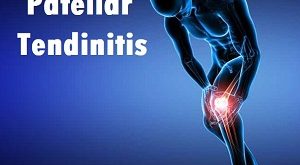Description
Polymyalgia rheumatica (PMR) is a disorder that causes muscle pain and stiffness in your neck, shoulders, and hips. It is most common in women and almost always occurs in people over 50. The main symptom is stiffness after resting. Other symptoms include fever, weakness and weight loss. In some cases, polymyalgia rheumatica develops overnight. In others, it is gradual.
The cause of polymyalgia rheumatica is unknown. There is no specific test for it. Your doctor will use your medical history, symptoms, and a physical exam to make the diagnosis. Lab tests for inflammation may help confirm the diagnosis.
Polymyalgia rheumatica sometimes occurs along with giant cell arteritis, a condition that causes swelling of the arteries in your head. Symptoms include headaches and blurred vision. Doctors often prescribe prednisone, a steroid medicine, for both conditions. With treatment, polymyalgia rheumatica usually disappears in a day or two. Without treatment, it usually goes away after a year or more.
Pathophysiology
The cause of polymyalgia rheumatica (PMR) is unknown. PMR is closely linked to giant cell arteritis (GCA, temporal arteritis), although it is controversial whether GCA and PMR are two separate diseases or part of the same spectrum of disease. One hypothesis is that in a genetically predisposed patient, an environmental factor, possibly a virus, causes monocyte activation, which helps determine the production of cytokines that induce manifestations characteristic of PMR and GCA. However, although several infectious agents have been investigated as possible triggers, results are inconclusive.
Causes of Polymyalgia Rheumatica
The exact cause of polymyalgia rheumatica is unknown. Two factors appear to be involved in the development of this condition:
- Genetics. Certain genes and gene variations might increase your susceptibility.
- An environmental exposure. New cases of polymyalgia rheumatica tend to come in cycles, possibly developing seasonally. This suggests that an environmental trigger, such as a virus, might play a role. But no specific virus has been shown to cause polymyalgia rheumatica.
Giant cell arteritis
Polymyalgia rheumatica and another disease known as giant cell arteritis share many similarities. Many people who have one of these diseases also have symptoms of the other.
Giant cell arteritis results in inflammation in the lining of the arteries, most often the arteries in the temples. Signs and symptoms include headaches, jaw pain, vision problems and scalp tenderness. If left untreated, this condition can lead to stroke or blindness.
Risk factors
Risk factors for polymyalgia rheumatica include:
- Age. Polymyalgia rheumatica affects older adults almost exclusively. It most often occurs between ages 70 and 80.
- Sex. Women are about two to three times more likely to develop the disorder.
- Race. Polymyalgia rheumatica is most common among white people whose ancestors were from Scandinavia or northern Europe.
Symptoms of Polymyalgia Rheumatica
The symptoms of PMR result from inflammation of the joints and surrounding tissues. Symptoms make start slowly or suddenly. Stiffness is usually worse in the morning and during long periods of inactivity. Sometimes, pain and stiffness can lead to lack of use of some body parts, which could result in muscle weakness. Most people with PMR have pain and stiffness in at least two of the following areas:
- Buttocks.
- Hips.
- Neck.
- Thighs.
- Upper arms and shoulders.
Other symptoms of PMR include:
- Fatigue.
- Fever.
- Poor appetite.
- Weight loss.
PMR may also occur with another serious condition called giant cell artedritis (also known as temporal arteritis), which can be dangerous. New, persistent headaches – particularly on the side of the head – scalp tenderness, vision changes or jaw pain when eating can be signs of this condition.
Complications
Symptoms of polymyalgia rheumatica can greatly affect your ability to perform everyday activities, such as:
- Getting out of bed, standing up from a chair or getting out of a car
- Combing your hair or bathing
- Getting dressed
These difficulties can affect your health, social interactions, physical activity, sleep and general well-being.
Diagnosis of Polymyalgia Rheumatica
Polymyalgia rheumatica (PMR) can become quite severe if not diagnosed and treated immediately, resulting in severe immobility and disability. Once diagnosed, PMR responds well to medications.
There is no specific test to confirm PMR, however, a doctor can use information from the patient’s physical examination, laboratory tests, and diagnostic imaging to arrive at an accurate diagnosis.
Physical Examination and Medical History
A physical examination and medical history can be useful in identifying the signs of PMR. The common findings may include:
- Severe pain and/or swelling in both shoulders are seen in most cases
- Pain in the neck and hip (seen in 50% to 70% of cases)
- Morning stiffness in affected joints lasting over an hour
- Tenderness in the hip, shoulder, and upper arm muscles
- Fever
PMR almost always occurs in people over 50 years of age. Since giant cell arteritis is commonly associated with PMR, a history of headaches, jaw pain, or any blurriness in vision is relevant.
Blood Tests
The common blood tests to help diagnose PMR include:
- High Erythrocyte sedimentation (ESR) – can often be highly elevated and may exceed 100mm/hour in some cases (normal value – <30mm/hour)
- C-reactive protein (CRP)
- Anemia
- High liver enzymes
These tests are used to identify specific proteins that are released from the areas of inflammation in PMR.
Medical Imaging Techniques
Ultrasound imaging of the shoulders and hips can identify bursitis, synovitis, and tenosynovitis in the affected areas. Inflammation in PMR can result in:
- Subdeltoid bursitis (shoulder bursitis)
- Trochanteric bursitis (hip bursitis)
- Biceps tenosynovitis (tenosynovitis in the upper arm)
- Glenohumeral synovitis (shoulder joint synovitis)
An ultrasound examination can be useful in diagnosing PMR, though they are seldom needed to make the diagnosis. In most cases, the medical history and blood test reports are the most important factors leading to a PMR diagnosis.
Treatment of Polymyalgia Rheumatica
Polymyalgia rheumatica is usually treated with a corticosteroid medication (eg: prednisone). High doses are given initially and then gradually decreased (or tapered) to the lowest possible level at which symptoms are controlled. There is usually a quick response to corticosteroid treatment and symptoms tend to be dramatically decreased within a few days of starting the medication.
Doses will be tailored to the individual according to how well the symptoms are being controlled. Doses may need to be increased when the body is under stress, such as after surgery, injury, or during another illness.
Most people can stop taking corticosteroid medication within two years, though some people may need to take low doses for several years. When a person is free of symptoms and has not needed to take medication for a few months the disease is considered to be in remission.
Relapses (which is when symptoms return) may occur once corticosteroid treatment is stopped but symptoms will usually respond quickly if treatment is re-started. Many people will relapse during the tapering of the corticosteroids to find the lowest possible dose. These relapses are treated by increasing the drug dose for a while then gradually reducing the dose again.
While corticosteroids are very effective in treating PMR, long-term use of the medication can produce side effects. These include:
- Increased susceptibility to infections
- Increased appetite or weight gain
- Thinning of the bones (osteoporosis), especially in women
- Puffiness of the face
- Thinning and easy bruising of the skin
- High blood pressure
- Diabetes
- Clouding of the lenses in the eyes (cataracts).
The need to manage the symptoms of the PMR needs to be balanced with the potential for side effects. It is important to never abruptly stop taking corticosteroid medication. The dose needs to be gradually reduced until it’s at a level where it can be safely stopped.
Regular monitoring for side effects is required during corticosteroid treatment and dose reduction. Other treatments may be prescribed to manage reactions to corticosteroid medication (eg: drugs that prevent bone thinning).
Methotrexate, which is a drug that suppresses the activity of the immune system, may be given with corticosteroids in some patients, usually people whose symptoms flare up or who do not respond adequately to corticosteroids. It may also be used to reduce the dosage of corticosteroid to minimise corticosteroid-related side effects.
Other factors that are important in managing PMR include:
- Physical therapy or exercising regularly – particularly low impact exercise and stretching
- Eating a healthy, balanced diet
- Having adequate amounts of rest.
Other medications that may be used to treat the condition include non-steroidal anti-inflammatory medications (NSAIDs). NSAIDs help to reduce inflammation and lessen pain but are not as effective as corticosteroids in providing symptom relief. Some people find alternative therapies such as acupuncture and massage are helpful in treating the symptoms of PMR.
Lifestyle and home remedies
Over-the-counter nonsteroidal anti-inflammatory drugs, such as ibuprofen (Advil, Motrin IB, others) or naproxen sodium (Aleve), are not usually recommended for easing the signs and symptoms of polymyalgia rheumatica.
Healthy lifestyle choices can help you manage the side effects that corticosteroid treatment can cause:
- Eat a healthy diet. Eat a diet of fruits, vegetables, whole grains, and low-fat protein and dairy products. Limit the salt (sodium) in your diet to prevent fluid buildup and high blood pressure.
- Exercise regularly. Talk to your doctor about exercise that’s appropriate for you to maintain a healthy weight and to strengthen bones and muscles.
- Get enough rest. Rest is necessary for your body to recover from exercise and activities of daily living.
- Use assistive devices. Consider using luggage and grocery carts, reaching aids, shower grab bars, and other assistive devices to help make daily tasks easier.
Is it possible to prevent Polymyalgia Rheumatica?
There is no prevention for polymyalgia rheumatica. Prevention measures focus on preventing side effects of drugs used to treat polymyalgia rheumatic.
 Diseases Treatments Dictionary This is complete solution to read all diseases treatments Which covers Prevention, Causes, Symptoms, Medical Terms, Drugs, Prescription, Natural Remedies with cures and Treatments. Most of the common diseases were listed in names, split with categories.
Diseases Treatments Dictionary This is complete solution to read all diseases treatments Which covers Prevention, Causes, Symptoms, Medical Terms, Drugs, Prescription, Natural Remedies with cures and Treatments. Most of the common diseases were listed in names, split with categories.







